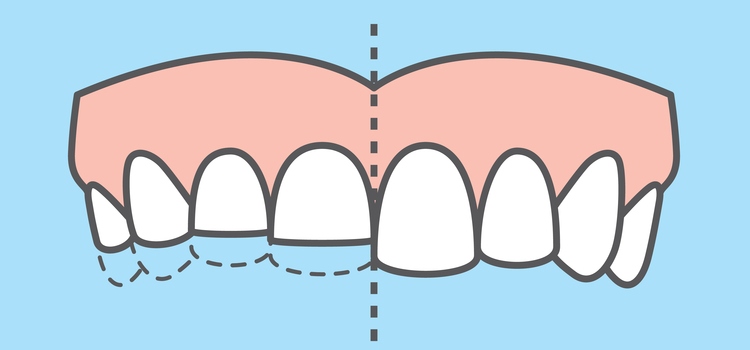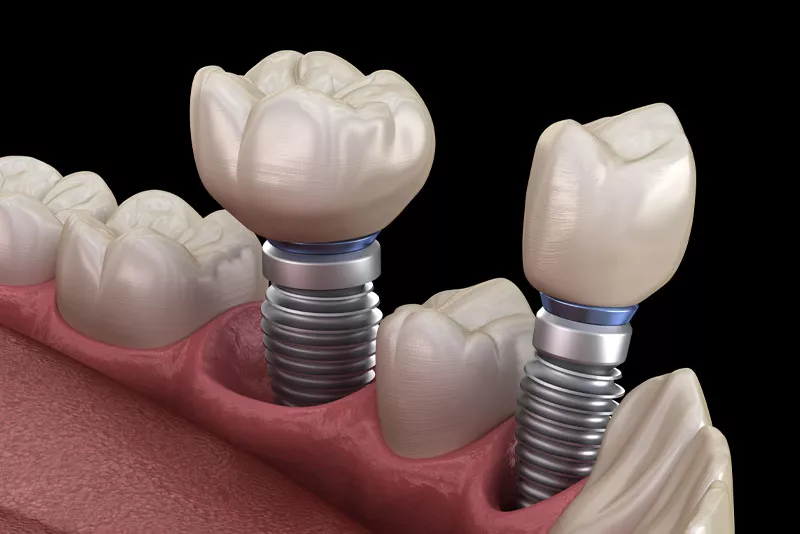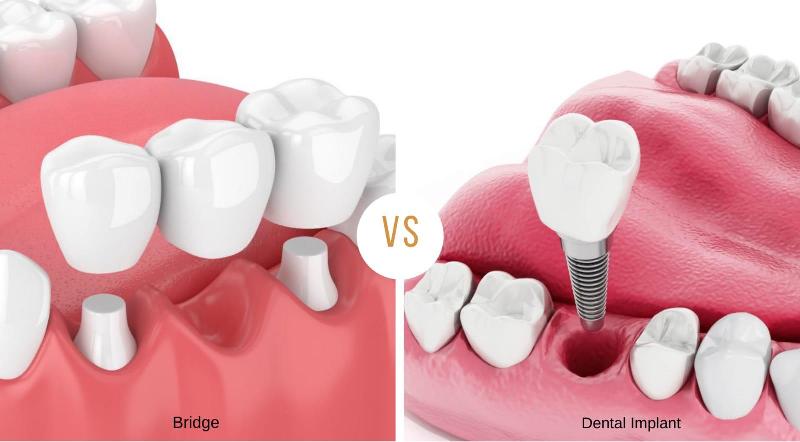Are you suffering from discolored, chipped, or uneven teeth? Are you unhappy or self-conscious about your smile due to your imperfect teeth? If so, you are not alone.
Today, many people suffer from dental imperfections that can impact their confidence and daily interactions. Fortunately, there’s a solution that can help you regain your radiant smile – teeth bonding. Also known as dental bonding or composite bonding, the cosmetic surgery is a simple yet remarkably transformative procedure that has the potential to turn your dental woes into a dazzling expression of happiness.
In the rest of this article, we will take a deep dive into teeth bonding, and explore the before and after effects of teeth bonding. We will also review some of the pictures taken of patients who have undergone the procedure to perfect their smile. So, whether you are considering teeth bonding, or are simply curious about this procedure, this article will provide you with all the information you need to make an informed decision.
Overview of Teeth Bonding
Teeth bonding is a cosmetic dental procedure that can improve the appearance through the application of a tooth-colored composite resin material to correct any dental imperfections and enhance the appearance of one’s smile. The procedure is commonly used to address a range of dental problems such as chipped or cracked teeth, uneven teeth, gaps between teeth, and discolored or stained teeth.
The procedure is generally painless and can be completed in a single visit to the dental clinic, making it a popular option for patients who want to improve the appearance of their teeth without undergoing more invasive procedures or spending months to complete a treatment.
A typical teeth bonding procedure involves the following step:
- Shade selection: The dentist will choose a resin color that closely matches your natural tooth shade for optimal aesthetic results.
- Tooth preparation: The tooth surface is gently roughened, and a conditioning liquid is applied to ensure strong adhesion of the bonding material.
- Application of resin material: The composite resin is applied to the tooth and carefully sculpted into the desired shape.
- Curing: A high-intensity curing light is used to harden the resin material and speed up the bonding process, allowing the resin material to secure to the tooth.
- Polishing: The bonded tooth is polished and refined to achieve a smooth, natural-looking finish.
This resin material is a biocompatible composite made from a mixture of plastic and glass, which mimics the natural appearance of teeth. However, it is important to note that the material is not as strong or durable as natural tooth enamel or other dental materials like porcelain veneers. As such, patients with dental bonding have to take extra care to avoid damaging or chipping the resin.
You may be interested in: All About Tooth Cupping: Causes, Treatments, and Prevention
Also, teeth bonding may not be suitable for everyone or address all the dental problems. For serious cases such as severe tooth decay, a root canal may be necessary to resolve the dental problem. Tooth bonding is also not suitable for patients with poor gum health or unhealthy teeth as the tooth structure is unable to support the resin composite material.
Before and After Effects of Teeth Bonding
The process can correct various dental imperfections and improve the appearance of one’s smile. Here’s a general comparison of teeth before and after dental bonding:
Before Teeth Bonding:
- Discolored teeth: Teeth may be stained or discolored due to various factors like food, beverages, smoking, or aging.
- Chipped or cracked teeth: Teeth with minor chips or cracks may affect the aesthetics of a smile.
- Uneven or misaligned teeth: Some teeth may be slightly misaligned or uneven, causing an unbalanced appearance.
- Gaps between teeth: Diastema, or gaps between teeth, can occur naturally or due to misaligned teeth.
- Tooth wear: Teeth may show signs of wear from grinding, clenching, or acid erosion.
After Teeth Bonding:
- Improved color: The tooth-colored resin material helps to mask stains or discolorations, resulting in a more uniform and brighter smile.
- Restored shape: Chipped or cracked teeth can be repaired, and their shape restored with the help of the bonding material.
- Balanced alignment: Teeth can be reshaped and made to appear more even or aligned, improving the overall appearance of the smile.
- Closed gaps: The bonding material can be used to fill in gaps between teeth, creating a more cohesive and aesthetically pleasing smile.
- Enhanced tooth structure: Bonding can help to protect the tooth surface from further wear or damage by adding a protective layer of resin material.
Keep in mind that there are several disadvantages of teeth bonding when compared to other cosmetic dental procedures like veneers or crowns. For instance, teeth bonding may need to be replaced every few years depending on the individual’s habits and dental care. Also, results are not guaranteed as it depends on the severity of the dental issue as well as the experience of the dentist.
Before and After Pictures of Teeth Bonding
Here are a few comparison pictures of patients who have undergone the teeth bonding procedure.
Male, 23 years old
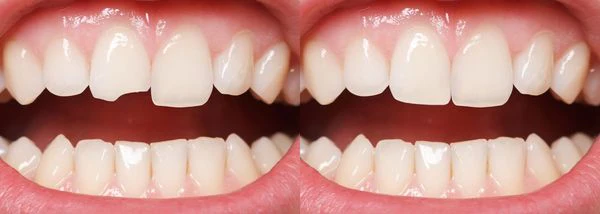
In the above, a male patient had suffered from a chip in the tooth due to a sports injury. In a single session, the patient was able to restore his chipped tooth and regain his perfect teeth!
Male, 32 years old
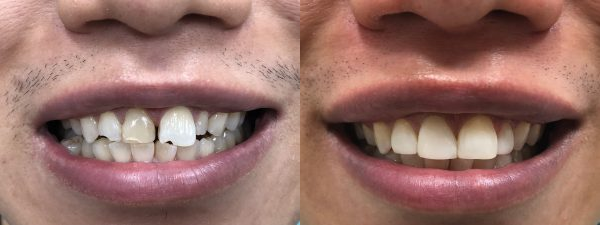
In the above, a male patient is suffering from chipped teeth, tooth discoloration, and gaps between the teeth. A whitening treatment was first administered to improve the color of the tooth. After that, the patient underwent teeth bonding to cover the gap and improve the overall appearance of the teeth.
Female, 43 years old

In a single session, the patient restore the chipping of her teeth as well as the discoloration.
Male, 16 years old

The young boy had fell off his bike and suffered significant damage to his teeth. The boy had undergone root canal treatment for one of the teeth; all the damaged teeth was restored via teeth bonding.
Takeaway
With its ability to shape and sculpt the composite resin material to match the natural contours of the tooth, teeth bonding can produce a natural-looking result that can enhance the functionality and aesthetics of the teeth.
Before and after pictures of teeth bonding can showcase the potential benefits of this procedure, demonstrating how it can transform a smile from one with noticeable imperfections to one that is uniform, symmetrical, and aesthetically pleasing.
If you are considering teeth bonding or other cosmetic dental procedures, consult with your local dental clinic to discuss your options and determine the best course of action for achieving the smile you want. With proper care and maintenance, teeth bonding can provide a lasting improvement in the appearance of your teeth and help boost your confidence and self-esteem.




